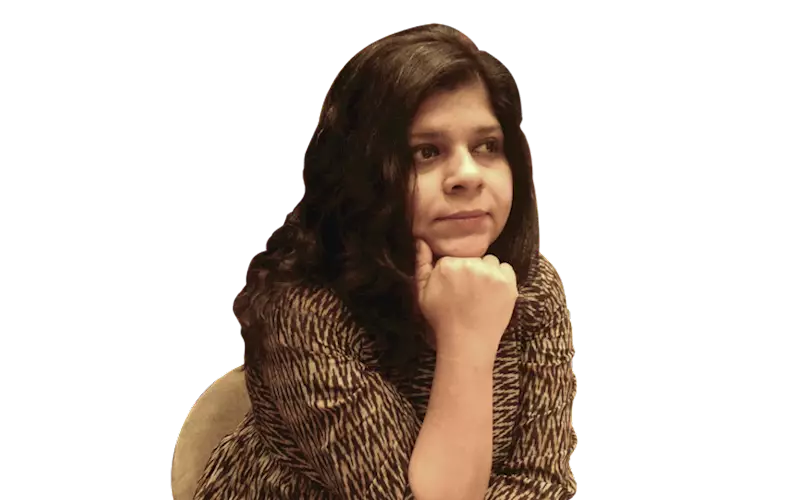The millennials are reading a lot, be sure of it: Arpita Das
Leonard Fernandes speaks to Arpita Das, founder-publisher, Yoda Press, about her publishing journey
04 Jun 2019 | By Leonard Fernandes
Interesting 12 months for books. How did you perform?
There is nothing more satisfying for a publisher and commissioning editor than to be able to envisage a list and actually see it taking shape. Back in 2016-17, I had started commissioning titles for a list on political dissent, and between April 2018 and April 2019 it has taken shape beautifully. In these 12 months, among other books, we have published the second volume of our graphic anthology series First Hand on the theme of exclusion; two important books on violence and human rights violations in Kashmir; a cutting-edge edited volume on how justice is denied to vulnerable communities with impunity in South Asia; a book of verses by poet Srijato who has been blacklisted by fundamentalist groups in West Bengal; a new translation of Bhagat Singh’s seminal writings on religion and revolution; and most recently, Harsh Mander’s hard-hitting firsthand account of Gujarat 2002 and its aftermath.
You have been a publisher for some time now. How many old tenets are still relevant, and does your team follow them?
Many tenets remain powerful. I would like to mention two: Be hands-on with your editing, because that is what infuses magic into books with potential and collaborate as your life depends on it; no publishing professional is an island. My team follows these to the T.
The thought that millennials don’t like reading books is the wrong assumption. They don’t like shoddy books. If we create a good book the millennials will read it. Your view?
It is a wrong assumption. I teach millennials at the university and they are the brightest, most clued-in lot who read as much as they watch and observe. I feel so embarrassed when people of my generation make the cardinal mistake of underestimating the intellectual capacities and curiosities of this generation. At home, I have a manic reader in a post-millennial 14-year-old, and I watch how much she swaps books with her friends, and how thrilled they all are to receive books on birthdays. The millennials are reading a lot, be sure of it.

One book title which was a feather in your cap? Why?
Bhagat Singh’s Inquilab edited by S Irfan Habib on our Sage-Yoda list; because I went with the idea to the right person and the book reached fruition magnificently.
Is there a book published by someone else, that you wish you’d created?
Many! But in these past 12 months in India, I would mention Sohaila Abdulali’s What We Talk About When We Talk About Rape, published with such care and thought by Myriad Editions in the UK.
One thing about Indian books which is most underrated?
The diversity of voices we offer is like a microcosm of the entire world and can be mirrored by some community or the other somewhere else in the world. So, all our stories are specific yet relevant and universal at the same time. If people got this they would buy rights to many more stories from our part of the world.
If you could make a change to a rule you’ve followed over the years, what would it be?
I have broken every rule I was ever familiar with, most of all my own. That’s the only way to learn.
Which is your least favourite part of book printing?
If you mean publishing, then it will be revenue collections!
Quick Questions
1 Sheetfed or web offset? Web offset
2 Gutenberg or Senefelder? Gutenberg
3 Frankfurt or Boston? Frankfurt, Frankfurt, Frankfurt
4 Paper or Kindle? Paper, of course!
5 Hotmelt or PUR? PUR
6 Secondhand or brand new? I cannot choose one.
7 Volume or POD? POD
8 Paperback or hardcase? For a long time now, for me, it’s been paperback
9 Inline or offline? Inline
10 Inkjet or UV? UV is magic!
12 Nobel or Jnanpith? Nobel
The government is vigilant about green and waste management. How has the print industry responded?
Well, there is growing awareness about using recycled paper, but we need to put our heads together and do much more. Plastic shrinkwrapping, for instance, needs to go pronto!
What’s the one waste process you are keen to know more about?
Composting; hopefully, I start doing it soon on my terrace.
One exciting title to look out for in the summer season?
Telly-Guillotined: How Television Changed India by the award-winning Amrita Shah.
What will the Indian publishing industry look like 25 years from now?
I am terrible at prophesying. I prefer to stay with the here and now. But I do think print will be around. Reading digitally will have also evolved into something far finer and more nuanced.
One author you would like to shoot a selfie with at the Delhi World Book Fair?
Always, Vikram Seth.
Your favourite five books?
Impossible to do, so I shall name my five favourites from five genres I love: Emily Bronte’s Jane Eyre from the classics; Marjane Satrapi’s Persepolis from graphic novels; Krishna Sobti’s Mitro Marjani from Indian languages; W G Sebald’s The Rings of Saturn from non-fiction; Elizabeth Kostova’s The Historian from fiction.











 See All
See All